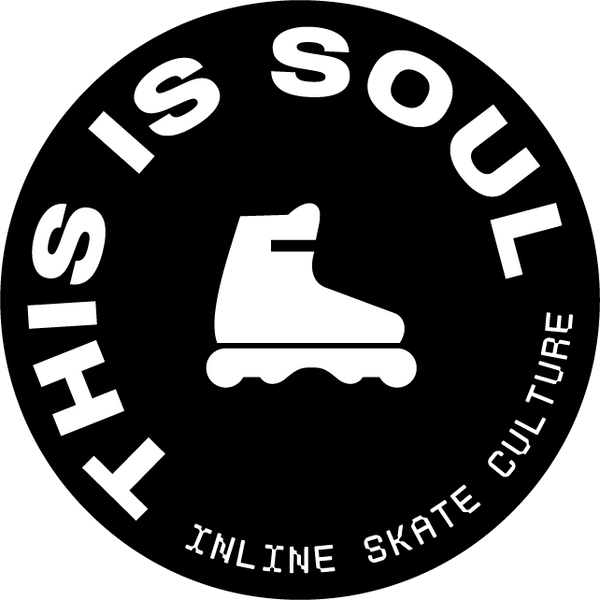Everything about grindwheels
Short Answer
Grind wheels, or anti-rocker wheels, are small, hard wheels in the middle of your frame that prevent wheel bite and improve stability for grinding.
Grindwheels play a crucial role in aggressive inline skating, providing support during grinds and helping skaters perform tricks on handrails, curbs, and other surfaces. These wheels are typically positioned in the second and third spots of a skate frame and are smaller than the outer wheels. Despite not touching the ground during regular skating, grind wheels prevent you from slipping out of your groove while grinding, and they also protect against wheel bite, which can cause sudden falls.
What is a Grindwheel?
Grindwheels, or anti-rocker wheels, are specifically designed for aggressive skating. These small wheels help stabilize your frame by adding rigidity and creating an artificial groove for smoother grinding. They are hard, durable, and often made from either plastic or polyurethane. While polyurethane wheels are slightly softer and provide some grip, hard plastic grind wheels are preferred for their toughness and resistance to wheel bite.
Grindwheels not only enhance performance but also strengthen your frame. Without grindwheels, your frame could flex too much during tricks, leading to instability. For example, the Featherlite 2 frame can be easily bent by hand, but adding grind wheels provides the extra stiffness needed for aggressive tricks.
The History of Grind Wheels
Grind wheels emerged in the early 1990s when aggressive skating was first gaining popularity. Early skaters would modify recreational skates like the Roces Classic FCO by removing the outer layer of broken wheels, leaving only the plastic core, which resembled modern grind wheels. This adaptation created an artificial groove, allowing skaters to perform grinds more easily. Over time, as aggressive skating evolved, so did the technology behind grind wheels, leading to more refined designs.
The first aggressive skates featured flat-bottom frames with no built-in groove, making grind wheels essential. Adding grind wheels to these early models helped skaters maintain balance and control while sliding on rails and curbs.
Frame Setups: Flat, Anti-Rocker, and Freestyle Grindwheels
When setting up your skates, the frame configuration is key. There are three main types of frame setups for aggressive skating:
- Flat Setup: This setup features four wheels on the ground, offering better maneuverability and a more playful skating experience. However, the small groove in the middle of the frame makes grinding more challenging.
- Anti-Rocker Setup: In this setup, the outer wheels are larger, while the middle wheels (grind wheels) are smaller. This configuration makes grinding easier but sacrifices maneuverability.
- Freestyle Setup: This setup has no middle wheels at all, providing a large groove for grinding. However, it’s less stable for tricks involving stairs or bumpy terrain, as the absence of grind wheels increases the risk of slipping during grinds.
While anti-rocker setups remain popular, some skaters prefer the freestyle setup for its enhanced grinding surface. Ultimately, the choice depends on your style and the type of tricks you want to perform.
What Makes a Grind Wheel Good or Bad?
There are several factors to consider when choosing grind wheels:
- Material: Grindwheels come in two primary materials—plastic and polyurethane. Plastic grind wheels are super hard and excel at preventing wheel bite, making them ideal for grinding. Polyurethane grind wheels are a bit softer and can roll during stair bashing, providing some grip when needed.
- Bearings: While the main purpose of grind wheels is to assist with grinds, having bearings can be beneficial in certain situations. For instance, when rolling over uneven surfaces, grind wheels with bearings allow for smoother motion. However, grind wheels without bearings are cheaper and still functional for most aggressive skaters.
- Spacing: Grindwheels with spacers can be advantageous for stability, but some cheaper options may rattle after extended use. This can be distracting and may affect your connection with your skates, so investing in higher-quality grind wheels with secure spacers can make a big difference.
- Size: Larger grind wheels provide more coverage and better protection against wheel bite. When selecting grind wheels, you can choose the size that best fits your frame and skating needs.
- Juice Blocks: Juice blocks are solid plastic pieces that replace grind wheels entirely. They provide all the same benefits—preventing wheel bite and adding strength to the frame—without rolling. Brands like 50/50 and Create Originals offer juice blocks for skaters looking for this alternative to grind wheels.
Conclusion
Grindwheels, or anti-rocker wheels, are essential for any aggressive skater looking to enhance their performance during grinds. Whether you prefer a flat, anti-rocker, or freestyle setup, choosing the right grind wheels can make a significant difference in your skating experience.
For more information on grindwheels and other inline skate components, check out our webshop at Thisissoul.com.
